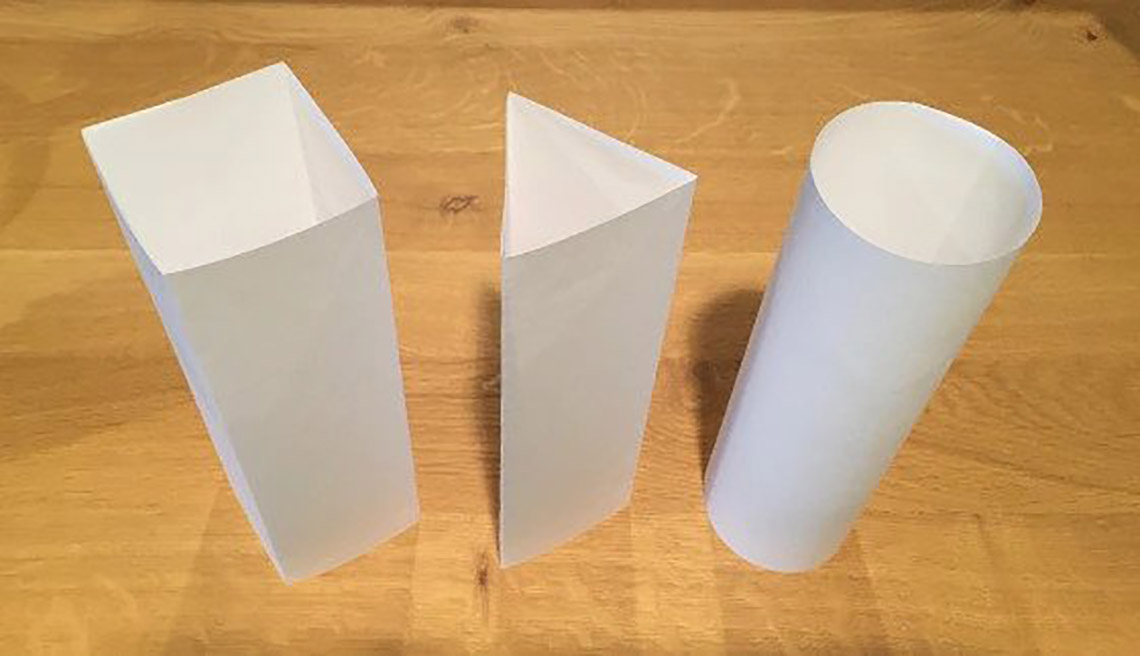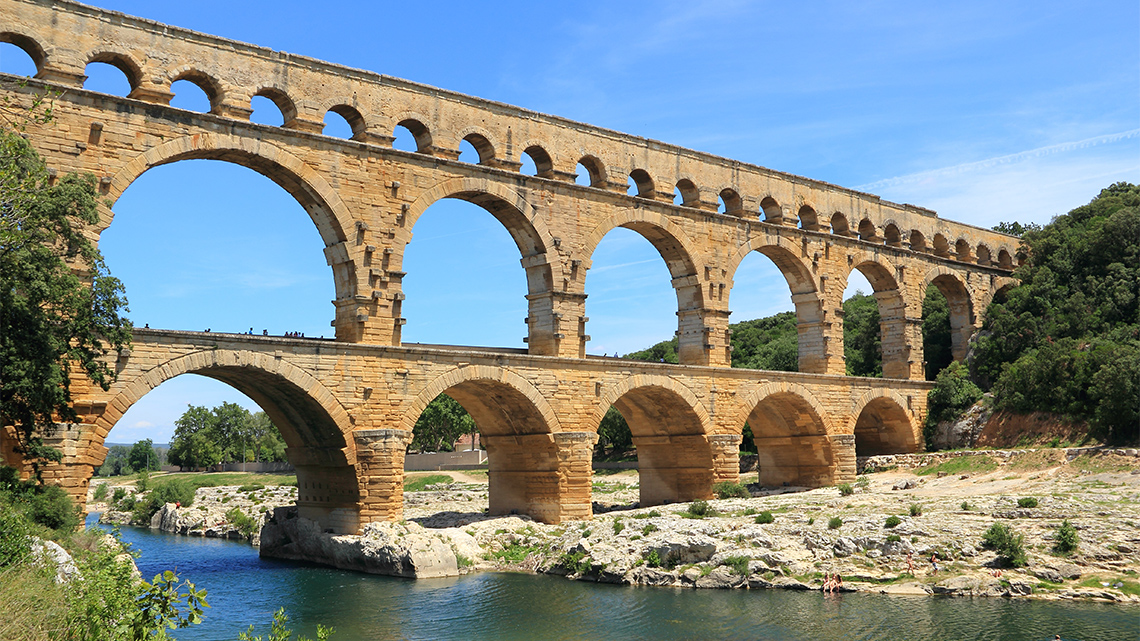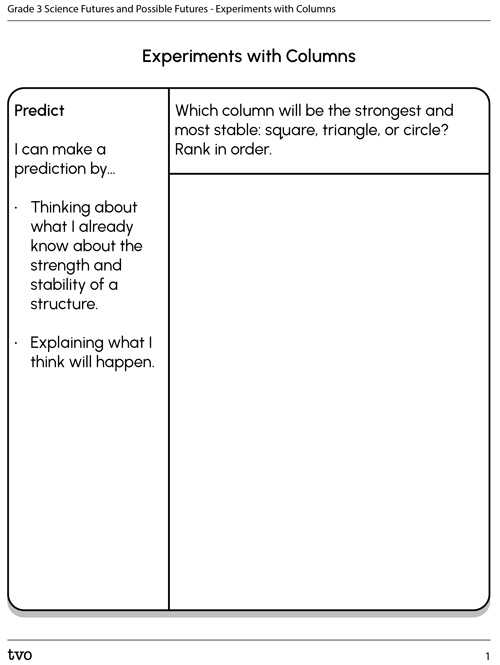Minds On
Ancient but strong structures
Humans have been building structures for a very long time. Some structures have fallen apart over time. Others are still standing because they were built strong and so they would not fall over. If a structure does not fall over easily, it is stable.
Explore the following images and descriptions of ancient structures. As you explore, think about the words “strong” and “stable.”
Brainstorm
Strong and stable
What do you think makes the structures strong and stable?
Record your ideas using a method of your choice.
Action
Stability
We need structures to be strong and stable so that people can use them safely.
People need structures that can hold a load (support weight), such as houses, buildings, bridges, tunnels, vehicles, etc. Structures need to be built with materials that are strong and that should stay stable for a long time.
Columns are among some of the oldest building elements. Columns are good at resisting pushing forces (compression) of a structure and its load.
Explore the following Science North video entitled “Column Challenge!” to learn more about the strength of columns
Let’s experiment!
In this section of the learning activity, you will be exploring if the shape of a column makes a difference to its stability. If an object is stable, that means that it will not fall over.
Before you begin, make a prediction by completing the Columns Experiment worksheet in your notebook or using the following fillable and printable document. If you would like, you can use speech-to-text or audio recording tools to record your thoughts.
Use the following checklist to help guide making your prediction.
Making a Prediction Checklist
I can make a prediction by…
Now put the columns in the following image in order from strongest and most stable to weakest and least stable. Explain why you ordered them this way.

Explore a paper column experiment.
Record your observations using the Columns Experiment worksheet, or by using another method of your choice.
Use the following checklist as you record your observations.
Recording Observations Checklist
I can record observations by…
Access the following Science North video entitled “Column Challenge!” to explore the paper column experiment. If possible, follow along with the video and build the three columns.
You would need the following:
- paper
- tape
- something to use as a weight, as each column is being tested
Pause and Reflect
Reflection questions
Respond to the following questions using a method of your choice.
- Why do you think the cylinder could hold the can?
- Why do you think the triangle and square could not hold the can?
- Was this the same or different than what you predicted?
Press ‘Let’s Check’ to reveal a possible answer.
Shape is important in the stability of a structure!
Cylinders do not have any edges or corners. If the load is centered, the load (weight) is the same distance from the edge of the column on all sides. This means that no part of the column is weaker than the rest. With a square or a triangle, some edges of the shape are closer or farther from the center of the material.
So, cylinder columns are less likely to fall apart and break
Press ‘Extension’ to access a follow up experiment.
Respond to the follow up questions.
- Do you think we could make a column with straight sides that would support the load?
- How important do you think the size of a cylinder is?
- What would happen if we used a narrower cylinder?
- Why do you think an engineer would include columns when designing buildings?
Record your responses using a method of your choice.
Making structures stronger
Engineers are always trying to find different ways they can make things stronger, especially when designing strong and stable structures. Steel and concrete are two materials that can be made stronger by mixing them with other materials.
Match these materials with what makes them stronger.
Explore the following Science North video entitled “Making Materials Stronger!” to learn more about metal and concrete.
Let’s experiment!
Explore how to make a simple material stronger!
Let’s try to lift a filled bucket (or another container with a handle) using just one sheet of paper towel while keeping the bucket (or other container) balanced. The goal is to lift the container without it falling over or spilling anything.
Brainstorm
Lifting a bucket
Can you come up with more than one idea? Which idea do you think might work the best? Why?
Record your responses using a method of your choice.
Now, explore the rest of the Science North video entitled “Making Materials Stronger!” to learn one way to make the paper towel sheet stronger.
In this video, you may have noticed that the shape of the material was changed to make it stronger. This change helped to distribute the weight of the object, and the compression and tension forces.
Consolidation
Sharing observations

In this learning activity you have explored how engineers design structures using materials that make the structure strong and stable. You also followed an experiment to see how the shape of an object can make it more or less stable.
Scientific experimentation process
An important part of the experimentation process is thinking about what you observed, and then sharing those thoughts using scientific vocabulary. These are the final two steps in the process, “Think” and “Share”.

You should think about what you have learned. Did you learn anything new? Were your questions answered?

Sharing what you have learned lets other people know about your topic too!
Pause and Reflect
Experiment conclusions
Using your observation notes from both experiments to guide your thinking, respond to the following questions in a method of your choice.
- What conclusions did you make about the stability of structures from both experiments?
- Did one of the experiments help you understand structures better? How?
- How else could you test the stability of a structure? Describe using vocabulary terms such as load, stability, size, column, framework, support, and/or shape.
Record your responses using a method of your choice.
Reflection
How do you feel about what you have learned in this activity? Which of the next four sentences best matches how you are feeling about your learning? Press the button that is beside this sentence.
I feel…
Now, record your ideas about your feelings using a voice recorder, speech-to-text, or writing tool.



